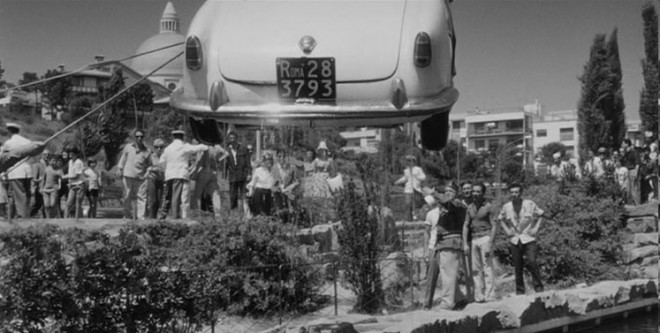Kenji Mizoguchi’s Gion bayashi—literally, Gion Festival Music—is captivating and (pardon) biting. This time, the “period” is contemporary, that is, postwar Japan; the location, the Gion district of Kyoto. Through two geishas, who both chafe at the restrictive tradition male-biased society expects them to uphold, Mizoguchi suggests a budding impulse toward female autonomy and self-determination. As in other Mizoguchi films, geishas thus become an example illustrating the circumstance of women in general in Japanese society.
Miyoharu, in her mid-thirties, has been apprenticing for a year Eiko, who approached her at 16 following her mother’s death, fleeing her father’s dereliction and her guardian-uncle’s sexual requirements in exchange for room and board. Miyoharu has been doing this at her own expense, but the borrowing thus necessary has tangled her in a labyrinthe of indebtedness. Each woman now has a client who repulses her, endangering the potential business deal one client hopes to effect with the other. Miyoharu avoids having sex with Kanzaki, to whom Kusuda hopes to give her, thereby cementing the deal. When Kusuda tries impressing Eiko into sex, Eiko bites his tongue. Hard. The district houses recruiting “entertainment” at night stop phoning up Miyoharu. Mizoguchi is taking aim at capitalism as well as gender inequality.
Humans are distributed in the mise-en-scène to suggest, sometimes by ironic reversal, the power that men wield vis-à-vis geishas. One of the most moving shots shows Miyoharu, in a corner, silently undressing to have sex, finally, with Kanzaki—the capitulation necessary to restore her livelihood. Miyoharu’s expression of ultimate defeat—Michiyo Kogure gives a fine performance throughout the film—accompanies the removal of her slipper; Mizoguchi, bless him, lacks the cruelty to extend the scene. We are not shown the removal of the other slipper; we aren’t shown the grotesque, power-coordinated sex.
Aided by Kazuo Miyagawa’s masterful black-and-white cinematography, Mizoguchi draws the film’s most brilliant poetry, especially at night, out of the slender streets and alley-ways that serve as a trenchant metaphor for the constraint of these women’s lives. In a shot reminiscent of the conclusive one in Hollywood’s Marked Woman (Lloyd Bacon, Michael Curtiz, 1937), the final shot shows Miyoharu and Eiko venturing into and through one of these narrow lanes in darkness to make their professional appointment as geishas. They are still (ironically, in the most expansive sense) in the grip of their environment, their desired freedom and self-determination shattered. But what about the future? The film leaves us with a sense of the contribution that the both of them have made to that.
B(U)Y THE BOOK
MY BOOK, A Short Chronology of World Cinema, IS CURRENTLY AVAILABLE FROM THE SANDS FILMS CINEMA CLUB IN LONDON. USING EITHER OF THE LINKS BELOW, ACCESS THE ADVERTISEMENT FOR THIS BOOK, FROM WHICH YOU CAN ORDER ONE OR MORE COPIES OF IT. THANKS.
